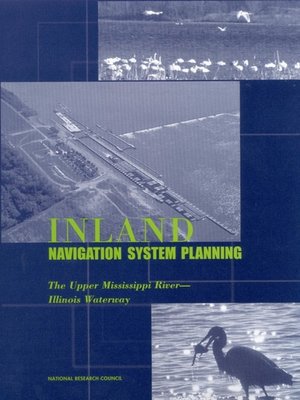Inland Navigation System Planning
ebook ∣ The Upper Mississippi River-Illinois Waterway
By National Research Council

Sign up to save your library
With an OverDrive account, you can save your favorite libraries for at-a-glance information about availability. Find out more about OverDrive accounts.
Find this title in Libby, the library reading app by OverDrive.



Search for a digital library with this title
Title found at these libraries:
| Library Name | Distance |
|---|---|
| Loading... |
In 1988, the U.S. Army Corps of Engineers began an investigation of the benefits and costs of extending several locks on the lower portion of the Upper Mississippi River-Illinois Waterway (UMR-IWW) in order to relieve increasing waterway congestion, particularly for grain moving to New Orleans for export. With passage of the Flood Control Act of 1936, Congress required that the Corps conduct a benefit-cost analysis as part of its water resources project planning; Congress will fund water resources projects only if a project's benefits exceed its costs. As economic analysis generally, and benefit-cost analysis in particular, has become more sophisticated, and as environmental and social considerations and analysis have become more important, Corps planning studies have grown in size and complexity. The difficulty in commensurating market and nonmarket costs and benefits also presents the Corps with a significant challenge. The Corps' analysis of the UMR-IWW has extended over a decade, has cost roughly $50 million, and has involved consultations with other federal agencies, state conservation agencies, and local citizens. The analysis has included many consultants and has produced dozens of reports.
In February 2000, the U.S. Department of Defense (DOD) requested that the National Academies review the Corps' final feasibility report. After discussions and negotiations with DOD, in April 2000 the National Academies launched this review and appointed an expert committee to carry it out.







